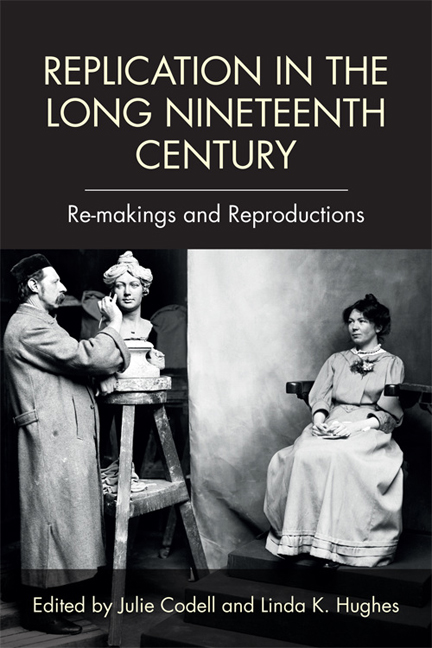Book contents
- Frontmatter
- Contents
- List of Illustrations
- Acknowledgments
- 1 Introduction: Replication in the Long Nineteenth Century – Re-makings and Reproductions
- I Replication and Networks
- II Replication and Technology
- III Replication and Authenticity
- IV Replication and Time
- 13 “Seeking Nothing and Finding It”: Moving On and Staying Put in Mugby Junction
- 14 The Origins of Replication in Science
- 15 Fathers, Sons, Beetles, and “a family of hypotheses”: Replication, Variation, and Information in Gregory Bateson's Reading of William Bateson's Rule
- 16 Afterword: The Implications of Nineteenth-Century Replication Culture
- Notes on Contributors
- Index
14 - The Origins of Replication in Science
from IV - Replication and Time
Published online by Cambridge University Press: 11 August 2018
- Frontmatter
- Contents
- List of Illustrations
- Acknowledgments
- 1 Introduction: Replication in the Long Nineteenth Century – Re-makings and Reproductions
- I Replication and Networks
- II Replication and Technology
- III Replication and Authenticity
- IV Replication and Time
- 13 “Seeking Nothing and Finding It”: Moving On and Staying Put in Mugby Junction
- 14 The Origins of Replication in Science
- 15 Fathers, Sons, Beetles, and “a family of hypotheses”: Replication, Variation, and Information in Gregory Bateson's Reading of William Bateson's Rule
- 16 Afterword: The Implications of Nineteenth-Century Replication Culture
- Notes on Contributors
- Index
Summary
Michael Faraday (1791–1867) was one of the major scientists of the nineteenth century, with important discoveries in physics and chemistry and, most famously, in the nature of electricity and magnetism, including the first clear account of a field theory of these forces. His first major discovery came in 1821 and won him international fame: he discovered that a current-carrying wire suspended near a magnet would rotate around the magnet (rather than being attracted or repelled), and that a magnet would rotate around a current-carrying wire. The magnetic forces generated by the current in the wire were transverse, not radial; they looped around the wire, not toward or away from the wire.
The late David Gooding explored Faraday's notebook entries for this research in great detail and even attempted his own replications of the results (Gooding 1990). Gooding found that holding a magnetic needle suspended by a thread near to a current-carrying wire (as Faraday did) resulted not in clear circular movement around the wire but rather a chaotic jumping back and forth. In effect, Faraday had to “tame” these movements to show that the magnetic forces produced by the current were in fact orderly. Under the right circumstances, they do produce circular motions of the needle around the wire. Faraday's exploration of these circumstances resulted in a series of constructed set-ups that gradually made the circular motion clearer. He was engaged in “constructive replication”: the circumstances were refined to converge on an unambiguous representation.
Figure 14.1 shows a sequence of sketches from Faraday's notebook. Note that as his conception of the orderliness of the phenomena became clear, the sketches became more meaningful, the circular, looping motions being shown in the last row. These led to a sketch of a possible apparatus (Figure 14.2) corresponding to the first set-up which produced circular motions. This was successively refined, eventuating in a large demonstration apparatus (Figure 14.3).
- Type
- Chapter
- Information
- Replication in the Long Nineteenth CenturyRe-makings and Reproductions, pp. 248 - 268Publisher: Edinburgh University PressPrint publication year: 2017



